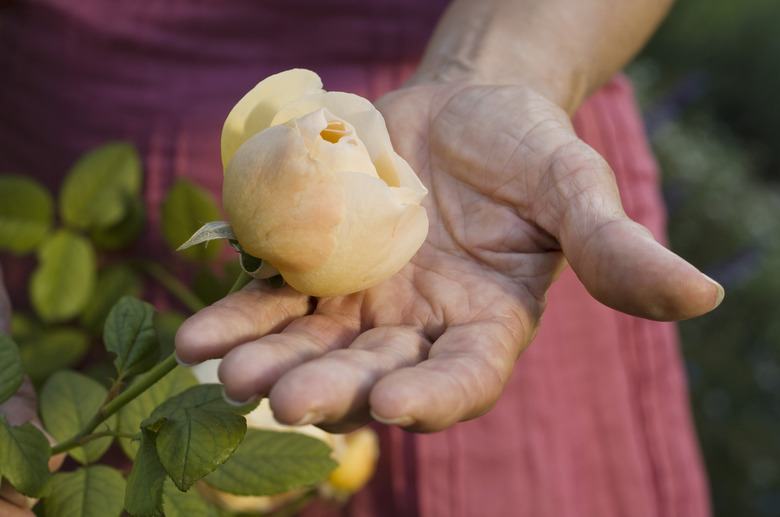How To Get Rid Of Thrips On Roses
As rosarians eagerly anticipate their first rose blossoms of the growing season, a common garden pest may disrupt the beautiful rose display. Thrips, tiny winged insects that gorge on blossoms and leaves, prefer light-colored roses and often make their presence known in a garden by causing unsightly brown blemishes on the rose blossoms or even preventing them from opening. Get rid of thrips on roses to stop the infestation and protect future blossoms.
Step 1
Watch your roses carefully to notice a thrip infestation as quickly as possible. If you see blossoms that swell but do not open or if you notice blossoms with discolorations on the petals, this indicates thrips on your roses. You may also see distorted leaves if you have thrips on your roses. Act swiftly to get rid of the thrips.
Step 2
Cut off all plant portions with thrip damage. Use the pruning shears to remove all blossoms, leaves and stems where you see evidence of thrips.
Step 3
Place these removed portions of the rosebush into a plastic bag and seal the bag tightly. By removing the portions of the plant and sealing them into the bag, you can effectively remove adult thrips and nymphs.
Step 4
- Watch your roses carefully to notice a thrip infestation as quickly as possible.
- Use the pruning shears to remove all blossoms, leaves and stems where you see evidence of thrips.
Step 5
Sprinkle systemic insecticide over the soil beneath the rosebush. Use approximately half a cup of granules to cover the soil evenly. This kills pupa thrips that are developing in the soil. If you do not eradicate these thrips now, they move up out of the soil and onto the rosebush within a few days.
Step 6
Spray the rosebush with insecticide at the same time that you apply the granular insecticide to the soil. Cover the entire plant completely. Repeat the spray application once per week throughout the growing season to interrupt the life cycle of surviving thrips.
Step 7
- Sprinkle systemic insecticide over the soil beneath the rosebush.
- Spray the rosebush with insecticide at the same time that you apply the granular insecticide to the soil.
Step 8
Continue watching the rosebush for evidence of thrips. Remove any portions of the plant that appear to have thrip damage.
